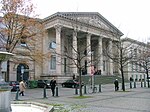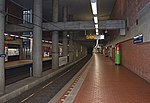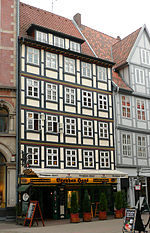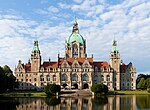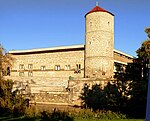Wangenheim Palace
1829 establishmentsHanover

The Wangenheim Palace (German: Wangenheimpalais) is a building in the Mitte district of Hanover. From 1863 to 1913, it was the town hall and seat of the city administration of Hanover. Today it is the seat of the Lower Saxony Ministry of Economic Affairs.
Excerpt from the Wikipedia article Wangenheim Palace (License: CC BY-SA 3.0, Authors, Images).Wangenheim Palace
Friedrichswall, Hanover Centre (Centre)
Geographical coordinates (GPS) Address Phone number Website Nearby Places Show on map
Geographical coordinates (GPS)
| Latitude | Longitude |
|---|---|
| N 52.369166666667 ° | E 9.7347222222222 ° |
Address
Niedersächsisches Ministerium für Wirtschaft, Bauen, Verkehr und Digitalisierung
Friedrichswall 1
30159 Hanover, Centre (Centre)
Lower Saxony, Germany
Open on Google Maps

